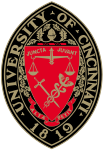Sudsy Malone's Rock 'n Roll Laundry & Bar

Sudsy Malone's Rock 'n Roll Laundry & Bar was a music venue in the Corryville neighborhood of Cincinnati, Ohio, across the street from Bogart's near the University of Cincinnati. John Cioffi was the owner. Cioffi opened other clubs including Sudsys in Lexington. The site often showcased many indie music and punk music bands. As the name suggests, the bar also housed a laundromat. The site had difficulty staying in business over the years, closing and reopening its doors several times, finally closing for good in 2008. In addition to the nightly shows by local and regional acts, many more established musicians and bands played the site, including Beck, Afghan Whigs, Guided By Voices, The White Stripes, Smashing Pumpkins, Morphine, Wesley Willis, Ass Ponys, Sleater-Kinney, Neutral Milk Hotel, Modest Mouse, Over the Rhine, Rigor Mortis, Betty Blowtorch, Vains of Jenna, and many other up-and-coming bands of the punk/grunge/alternative music scene of the late 1980s and 1990s.In the fall of 2020, the former Sudsy's was demolished.
Excerpt from the Wikipedia article Sudsy Malone's Rock 'n Roll Laundry & Bar (License: CC BY-SA 3.0, Authors, Images).Sudsy Malone's Rock 'n Roll Laundry & Bar
Short Vine Street, Cincinnati Corryville
Geographical coordinates (GPS) Address Phone number Website Nearby Places Show on map
Geographical coordinates (GPS)
| Latitude | Longitude |
|---|---|
| N 39.130088 ° | E -84.509287 ° |
Address
Mio's Pizzeria - Clifton
Short Vine Street 2634
45219 Cincinnati, Corryville
Ohio, United States
Open on Google Maps









